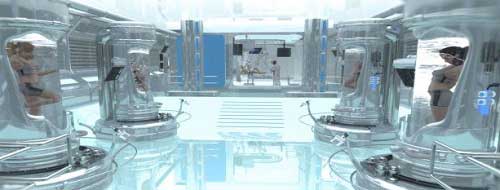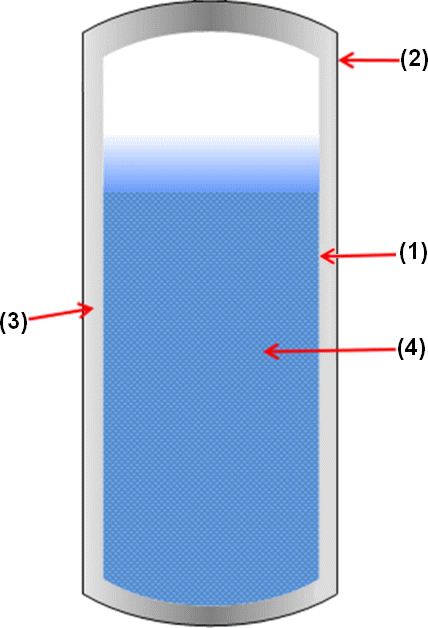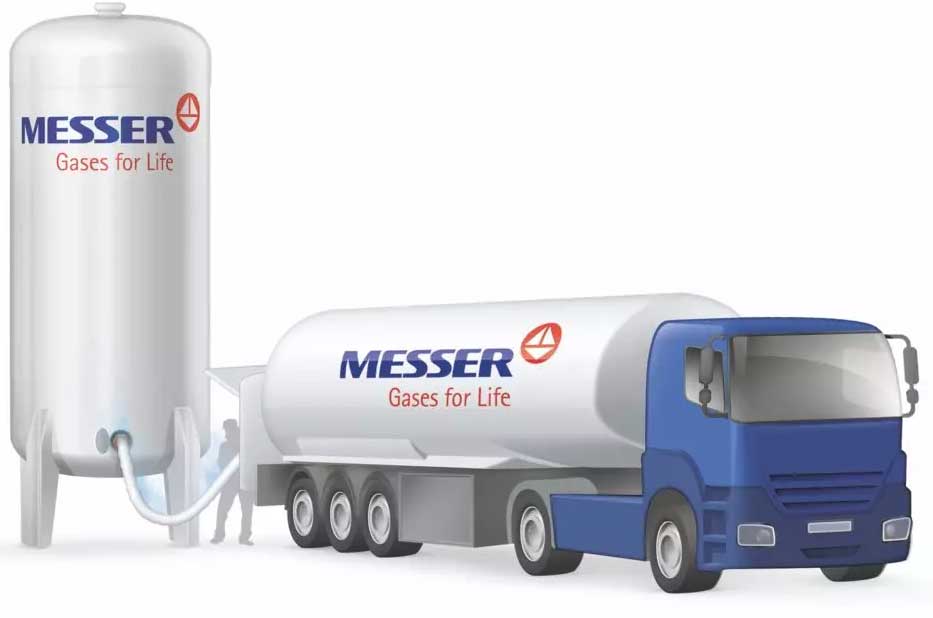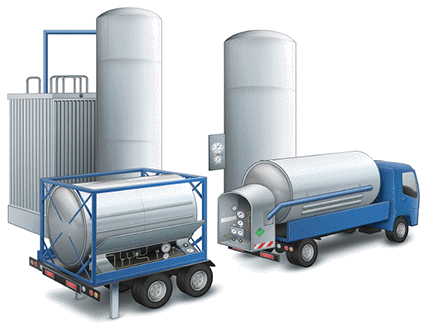 |
Cryogenic Tank |
A Cryotank or Cryogenic tank is a tank that is used to store material at very low temperatures
Cryogenic tanks are used for the storage of natural gases such as oxygen, argon, nitrogen, helium, hydrogen and other materials. Cryogenic tanks can store the materials at the right temperature and pressure for transportation.
The term "cryotank" refers to the storage of supercold fuels, such as liquid oxygen and liquid hydrogen. Cryotanks and cryogenic techniques appear in many science fiction movies, but are not currently developed.
 Science Fiction
Science Fiction
All that needs to happen is for a human to be loaded into the tank and then he can be frozen until a time comes when any diseases he has can be cured and he can live an even longer life. This could also be used for space travel and preserving human life in general.
The problem with this is that when the human body is frozen, ice crystals form in the cells. The ice crystals then continue to expand causing the cell wall to rupture, destroying or even killing the integrity of the cell. This means that in order for people to undergo the cryogenic process, a way to significantly increase glucose levels in the human body is needed.
There are several types of cryogenic tanks, while a common configuration includes double-walled cylindrical tanks where inner tanks are made of stainless steel and outer tanks made of carbon steel, filled with an insulating material. The choice depends on the specific liquid it contains and the required size and storage capacity.
Main components of a cryogenic tank
In order to retain these substances, a cryogenic tank must adapt to the specific environmental characteristics it will encounter, including size, location, weather, and soil types, among other conditions.
The liquid kept in it (nitrogen, oxygen, argon, liquefied natural gas, liquefied gasoline gas, ethylene...) will also strongly influence the characteristics of the cryogenic tank.
However, and although customization plays a key role in developing the right cryogenic tank, it is possible to generally speak of the following three components for these storage tanks..

Inner tank
This part is in direct contact with the cryogenic liquid and contains it, so it is usually made of stainless steel that can withstand very low temperatures without cracks or other problems.
Outer tank
This component, also known as the vacuum jacket, is made of carbon steel and is responsible for insulation and acts as a protective wall that prevents heat transfer from the outside environment.
Isolation system
In large-scale cryogenic tanks, both tanks are divided with a vacuum chamber to ensure insulation. Other options are also available, including the addition of a combination of insulation materials.
Pressure control system
In addition, tanks are usually equipped with a system that regulates pressure. This system is specially designed to keep the pressure constant to meet the needs of each user.

Details and safety considerations when working with a cryogenic tank
The following considerations must be observed to ensure safe and efficient installation of cryogenic tanks and their ancillary components and the rest of the elements..
- Choosing the right location - this applies to both outdoor and indoor equipment. As a general rule, it is wise to place the cryogenic tank near where the cryogen will be used.
- Anticipate potential safety hazards - this includes putting together the proper containment system to prevent leaks, as well as evacuation routes within the site and avoiding bituminous products.
- Consideration of vehicle accessibility - an important consideration is how the cryogenics will be replenished.
References..
www.messergroup.com
cryospain.com
www.lindedirect.com
Related Post(s)

One of the problems recognized early on in the storage of of gases as liquids at cryogenic temperatures (typically -150°C) is evaporative gas (BOG)...